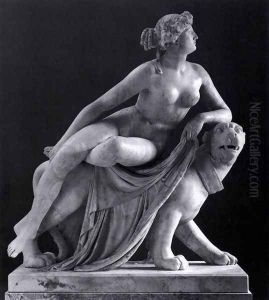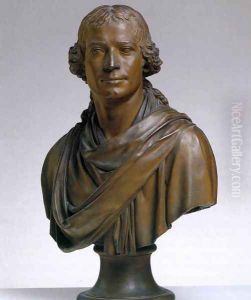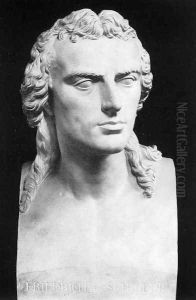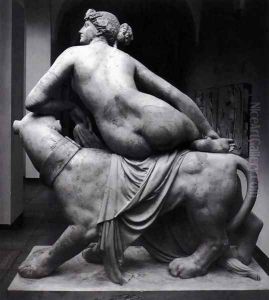Heinrich Dannecker Paintings
Johann Heinrich Dannecker was a renowned German sculptor known for his classical style and was one of the most prominent European artists of his time. Born on October 15, 1758, in Stuttgart, Dannecker was the son of a stable master working for Duke Karl Eugen of Württemberg. His talent for art was recognized early on, and he was subsequently sent to study at the Karlsschule Stuttgart, where he received a comprehensive education that included artistic training.
Dannecker's artistic journey continued as he went on to study in Paris with the famous sculptor Augustin Pajou and later in Rome, where he was profoundly influenced by classical antiquity and the Renaissance works he encountered. This period shaped his stylistic development and solidified his neoclassical approach to sculpture. In Rome, he also became part of a circle of German artists and was influenced by the aesthetics of Johann Joachim Winckelmann, the German art historian and archaeologist who was a proponent of the classical ideal in art.
After his years of study and growth in Rome, Dannecker returned to Stuttgart in 1780, where he became a professor and eventually the director at the Stuttgart Art School. Throughout his career, he was known for his portraits, mythological figures, and allegorical works. One of his most famous works is the 'Ariadne on the Panther', a sculpture that showcases his mastery of form and his ability to convey delicate emotional states through marble. This piece, in particular, won him great acclaim and became one of the iconic works of neoclassicism.
Despite the success of some of his works, Dannecker also faced financial difficulties and periods of ill health throughout his life. He remained a prolific artist until his later years, when he gradually withdrew from public life. Dannecker passed away on December 8, 1841, in Stuttgart, but left behind a legacy that continues to be celebrated for its contribution to the neoclassical movement in art. His works are preserved in various museums and collections, reflecting his status as one of Germany's foremost sculptors.



